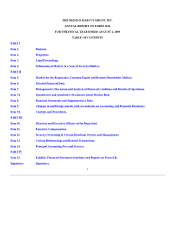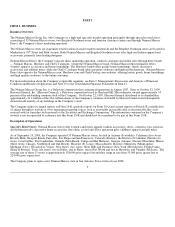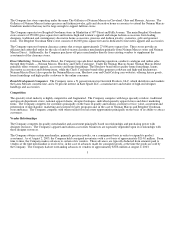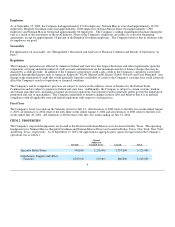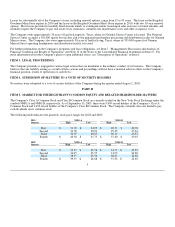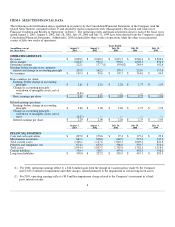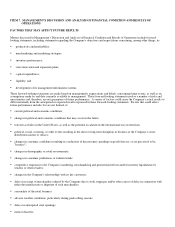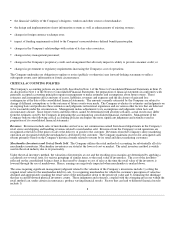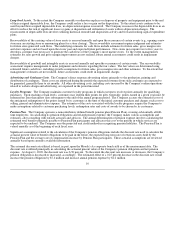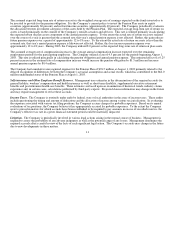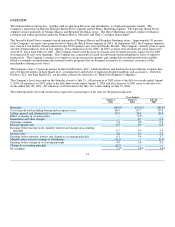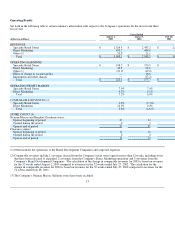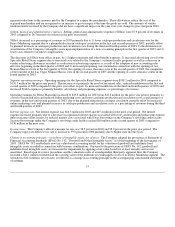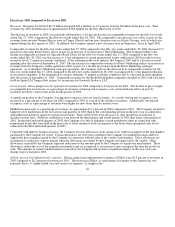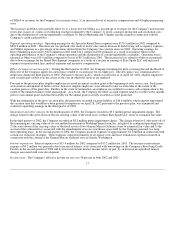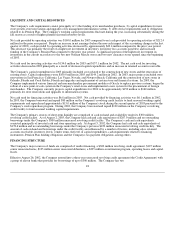Neiman Marcus 2002 Annual Report Download - page 14
Download and view the complete annual report
Please find page 14 of the 2002 Neiman Marcus annual report below. You can navigate through the pages in the report by either clicking on the pages listed below, or by using the keyword search tool below to find specific information within the annual report.
Long-lived Assets. To the extent the Company remodels or otherwise replaces or disposes of property and equipment prior to the end
of their assigned depreciable lives, the Company could realize a loss or gain on the disposition. To the extent assets continue to be
used beyond their assigned depreciable lives, no depreciation expense is incurred. The Company reassesses the depreciable lives in an
effort to reduce the risk of significant losses or gains at disposition and utilization of assets with no depreciation charges. The
reassessment of depreciable lives involves utilizing historical remodel and disposition activity and forward-looking capital expenditure
plans.
Recoverability of the carrying value of store assets is assessed annually and upon the occurrence of certain events (e.g., opening a new
store near an existing store or announcing plans for a store closing). The recoverability assessment requires judgment and estimates
for future store generated cash flows. The underlying estimates for cash flows include estimates for future sales, gross margin rates
and store expenses and are based upon the stores' past and expected future performance. New stores may require two to five years to
develop a customer base necessary to generate the cash flows of the Company's more mature stores. To the extent management's
estimates for sales growth and gross margin improvement are not realized, future annual assessments could result in impairment
charges.
Recoverability of goodwill and intangible assets is assessed annually and upon the occurrence of certain events. The recoverability
assessment requires management to make judgments and estimates regarding the fair values. The fair values are determined using
estimated future cash flows, including growth assumptions for future sales, gross margin rates and other estimates. To the extent that
management's estimates are not realized, future assessments could result in impairment charges.
Advertising and Catalogue Costs. The Company's direct response advertising relates primarily to the production, printing and
distribution of catalogues. These costs are amortized during the periods the expected revenues from such catalogues are expected to
be generated, generally three to six months. All other advertising costs, including costs incurred by the Company's online operations
related to website design and advertising, are expensed in the period incurred.
Loyalty Programs. The Company maintains customer loyalty programs in which customers receive points annually for qualifying
purchases. Upon reaching certain levels, customers may redeem their points for gifts. Generally, points earned in a given year must be
redeemed no later than ninety days subsequent to the end of the annual program period. The Company accrues the estimated costs of
the anticipated redemptions of the points earned by its customers at the time of the initial customer purchase and charges such costs to
selling, general and administrative expense. The estimates of the costs associated with the loyalty programs require the Company to
make assumptions related to customer purchasing levels, redemption rates and costs of awards to be chosen by its customers.
Pension Plan. The Company sponsors a noncontributory defined benefit pension plan (Pension Plan) covering substantially all full-
time employees. In calculating its pension obligations and related pension expense, the Company makes various assumptions and
estimates, after consulting with outside actuaries and advisors. The annual determination of pension expense involves calculating the
estimated total benefit ultimately payable to Pension Plan participants and allocates this cost to the periods in which services are
expected to be rendered. The Company uses the projected unit credit method in recognizing pension liabilities. The Pension Plan is
valued annually as of the beginning of each fiscal year.
Significant assumptions related to the calculation of the Company's pension obligations include the discount rate used to calculate the
actuarial present value of benefit obligations to be paid in the future, the expected long-term rate of return on assets held by the
Pension Plan and the average rate of compensation increase by Pension Plan participants. These actuarial assumptions are reviewed
annually based upon currently available information.
The assumed discount rate utilized is based, in part, upon the Moody's Aa corporate bond yield as of the measurement date. The
discount rate is utilized principally in calculating the actuarial present value of the Company's pension obligation and net pension
expense. At August 1, 2003, the discount rate was 6.50 percent. To the extent the discount rate increases or decreases, the Company's
pension obligation is decreased or increased, accordingly. The estimated effect of a 0.25 percent decrease in the discount rate would
increase the pension obligation by $7.4 million and increase annual pension expense by $1.2 million.
10


